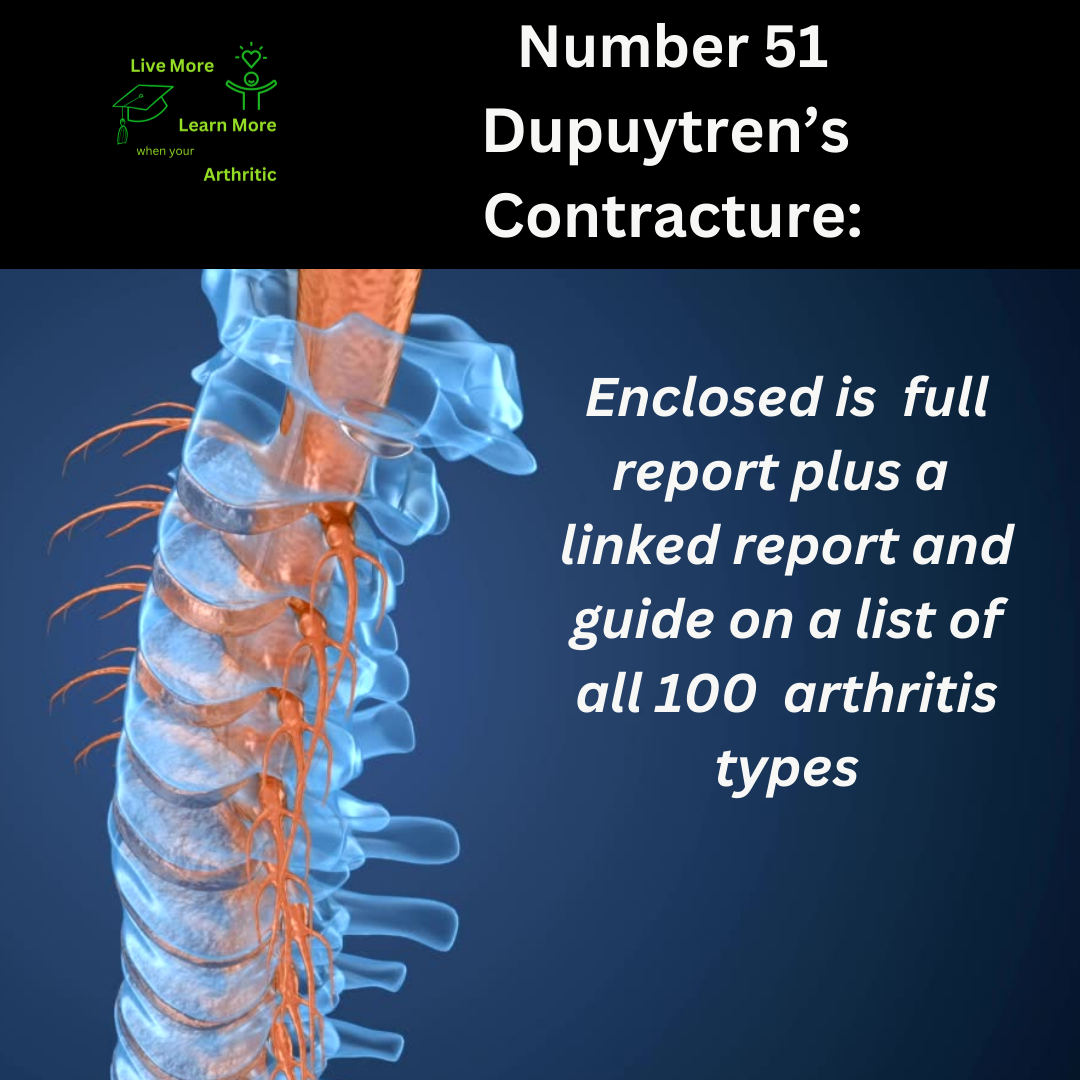
Dupuytren’s Contracture: Number 51 on the list of 100 types of Arthritis
Dupuytren’s contracture is a condition that affects the connective tissue in the palm of the hand. It gradually causes thickening and tightening of the tissue, leading to the fingers being pulled into a bent position, making it difficult to fully extend them. While this condition primarily affects the fingers, it can also occur in other areas of the body such as the feet.
 Description of Dupuytren’s Contracture
Description of Dupuytren’s Contracture
Dupuytren’s contracture is named after Baron Guillaume Dupuytren, a French surgeon who first described the condition in the 1800s. The hallmark of the disease is the formation of thickened tissue under the skin of the palm. Over time, this tissue can form nodules and cords that extend into the fingers, causing them to bend inward towards the palm. The ring finger and little finger are most commonly affected, but any finger can be involved.
Causes and Triggers
The exact cause of Dupuytren’s contracture is not fully understood, but it is believed to involve a combination of genetic and environmental factors. It is more common in people of Northern European descent and tends to run in families. Certain lifestyle factors such as heavy smoking and alcohol use have also been associated with an increased risk of developing the condition.
Symptoms
The primary symptom of Dupuytren’s contracture is the gradual onset of finger stiffness and bending. Initially, there may be small lumps or pits in the palm, which can progress to thick cords that extend into the fingers. As the disease advances, affected fingers may become permanently bent, making it difficult to perform everyday tasks such as gripping objects or shaking hands.
Age of Onset
Dupuytren’s contracture typically develops in adults over the age of 40, with the risk increasing with age. However, it can occur earlier in life, especially in individuals with a family history of the condition.
Impact on Lifespan and Health
Dupuytren’s contracture is not a life-threatening condition and does not directly affect lifespan. It is considered a benign condition in terms of mortality. However, it can significantly impact quality of life by limiting hand function and causing social and psychological distress due to its visible effects.
Proactive Approaches and Complications
There are several proactive approaches that can help manage Dupuytren’s contracture and improve quality of life. Physical therapy exercises, splinting, and massage can help maintain finger mobility. In severe cases, surgical intervention may be necessary to release the contracted tissue and restore hand function.
Complications of Dupuytren’s contracture include progressive loss of hand function, difficulty performing daily activities, and emotional distress due to visible deformity. In some cases, the condition can recur even after surgical treatment.
Natural Breakthroughs and Health Advantages
While there are no specific natural breakthroughs known to cure Dupuytren’s contracture, maintaining a healthy lifestyle with regular exercise and a balanced diet may help manage symptoms and improve overall health. Some anecdotal reports suggest that certain supplements or alternative therapies may provide relief, but scientific evidence is lacking.
Gender and Other Conditions
Dupuytren’s contracture is more common in men than in women. It is also associated with certain medical conditions such as diabetes and epilepsy. While the exact relationship between these conditions and Dupuytren’s contracture is unclear, individuals with these conditions may have an increased risk of developing the condition.
In summary, Dupuytren’s contracture is a progressive condition that affects the connective tissue of the hand, leading to finger stiffness and bending. While it primarily affects adults over the age of 40, it can occur earlier in individuals with a family history of the condition. Although there are no known cures or natural breakthroughs for Dupuytren’s contracture, proactive approaches such as physical therapy and surgical intervention can help manage symptoms and improve quality of life. It is important for individuals with Dupuytren’s contracture to work closely with healthcare professionals to develop a personalized treatment plan based on their specific needs and preferences.
